
In 1980, a Cuban general blazed a trail with his sword and rifle through the mountains of Nicoya. With tenacity and decisiveness he established a property that he decided to identify with his name: The Mansion of Antonio Maceo.
The “Bronze Titan,” as they called him, was one of the heroes of Cuban independence and today the town and district of La Mansion carry the name of the Cuban colony that this man established in the 19th century.
A sculptural center located in the central park of La Mansion recalls the image of this general, much like that of a handful of other monuments throughout the province dedicated to aborigines, generals, teachers, bull riders and bulls, musicians, poets, priests, a cowboy and even a former president of the republic.
These structures are important because they reaffirm the identity of communities and recall important events or people, says Carlos Manuel Zamora, cultural heritage historian at the Ministry of Culture.
That’s why, at The Voice of Guanacaste, we selected 13 sculptures. We wanted to tell their stories and in order to do so we turned to books, historians, city officials and even neighbors since the information isn’t centralized on any website. In some instances, the cost, year and name of the sculptor is unknown.
In Abandon
The image of general Maceo recalls not only his glory but the passing of time as well. Some 21 years after its creation, this sculpture center requires a good coat of paint, plastering, beautifying and information that explains the life of this famous general.
The same could be said of the majority of sculptures in Guanacaste: they are deteriorated and they need maintenance.
The city council of each canton is the body that authorizes, through an accord, the addition of a new sculpture. Anyone can propose one, explained Carlos Zamora. But the budget doesn’t necessarily come from city hall and, once built, the conservation and maintenance of the sculpture are left in abandon.
The problem is that there is no law in the country that makes a state entity responsible nor assigns a budget for the conservation and improvement of these structures.
We also asked mayors and city officials from Abangares, Bagaces, Cañas, Liberia, Nandayure, Nicoya and Santa Cruz if there is a budget to provide maintenance for the structures in each canton. Some said there isn’t one, while others were completely unsure despite the fact that many of the monuments are found in city parks.
More and More Modern Is Needed
The visual artist and coordinator of the festival of murals in Santa Cruz, José Jackson Guadamuz, indicated that new works of other Guanacastecan people or symbols should be proposed that offer visitors the opportunity to interact with these structures.
“The sculpture should generate interaction and chemistry that is accessible to people,” Guadamuz affirmed.
Guadamuz stressed that monuments with informative plates in other languages should be considered so that visitors can learn the history behind each person.
“Johnny Made This Statue”
Seven of the monuments that we selected were built between 2000 and 2010 with concrete. Nine of them were done by the Liberian sculptor Johnny García Clachar, who died in 2017.
In 2016, Garcia said in an interview with The Voice of Guanacaste that there were more that 60 sculptures in his portfolio.
Also Read: Johnny Garcia: Guanacaste Sculpture Legend
His legacy was so important that researcher Leoncio Jiménez Morales describes in his book The Hommage in Gardens and Parks (2014) that the works of Johnny Garcia “dominate in the cantons of the Nicoya peninsula so much so that his style becomes the zone’s style.”
“These pieces, because of their design, themes and form seem like figures that belong as decorations in a house of a monumental size, a clear and purposeful intention of the artist” Jimenez says in his book.
“Johnny Garcia is an essential sculptor of Guanacaste,” the Ministry of Culture’s historian Carlos Manuel Zamora said about the work of the Liberian sculptor. Is this how we should also respect his work?
Abangares
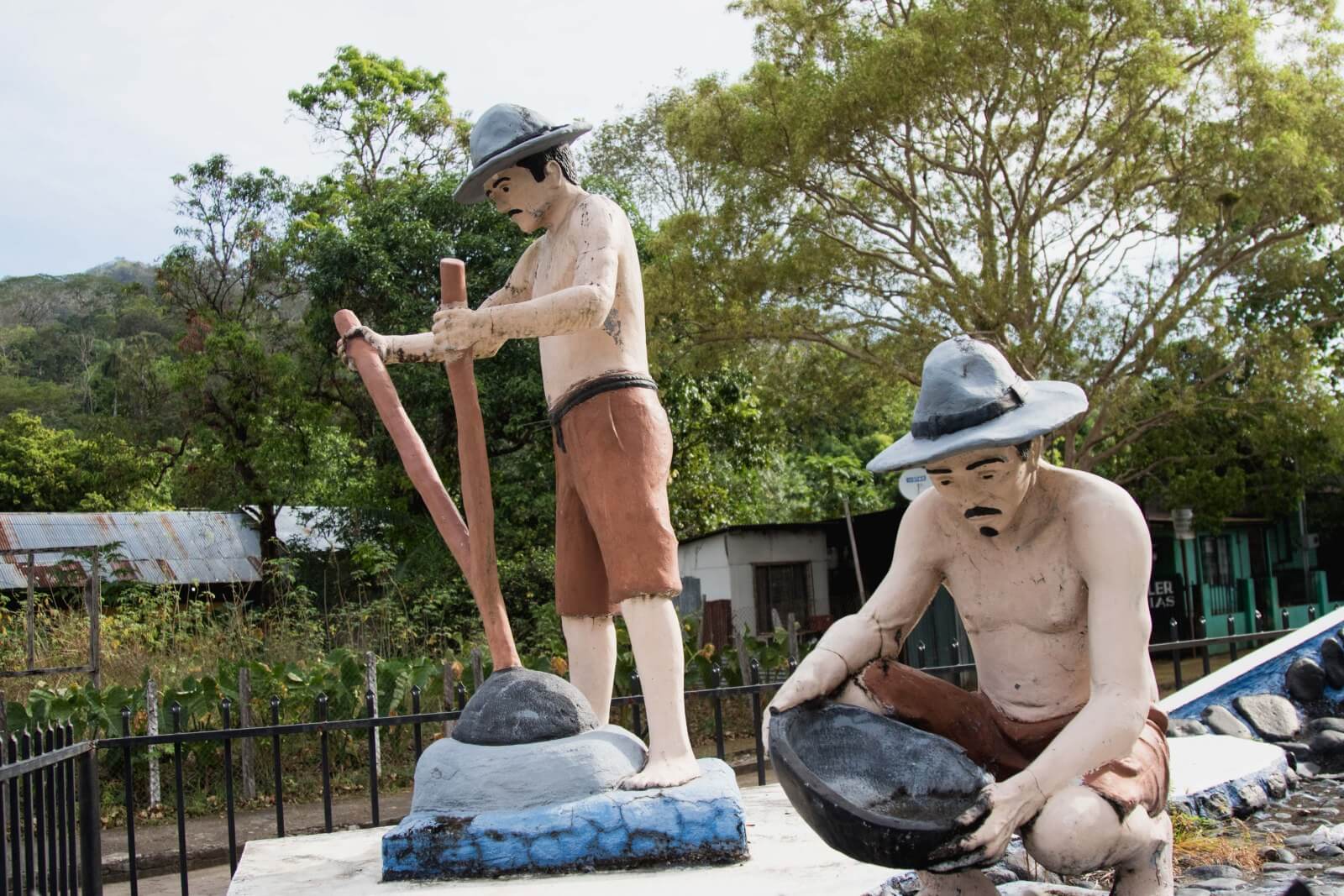
Name: Monument of the Unknown Minner
Why is it important?: It’s a tribute to the hundreds of gold panners (small scale miners) that came from all around the country and the world to work in the mines of Abangares during the first half of the 20th century.
Year: 1993
Sculptor: Johnny García Clachar
Cost: ¢3,000,000 ($5,360.00)
Material: Concrete.
How to get there: Located in front of the Caballo Blanco Bar
Cañas
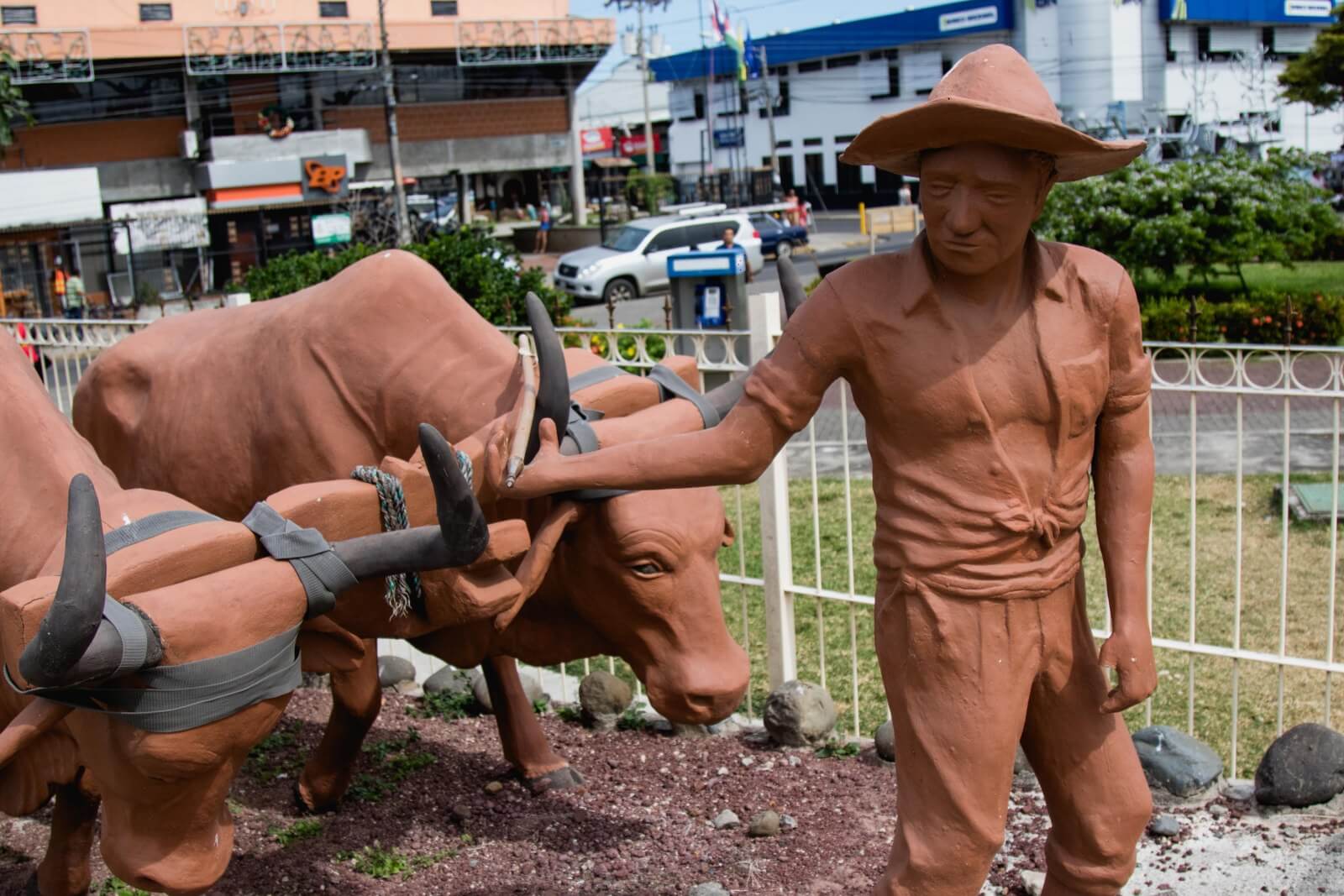
Nombre: Oxherd Monument
Why is it important? The sculpture was dedicated to the Guanacastecan oxherds that contributed to the economic, social and cultural development of the province. In Cañas, national oxherd day is celebrated every year on the second Sunday in March.
Year: 2009
Sculptor: Johnny García Clachar
Cost: ¢4,000,000 ($7,140)
Material: Concrete.
How to get there: Located in the Cañas central park
Nicoya
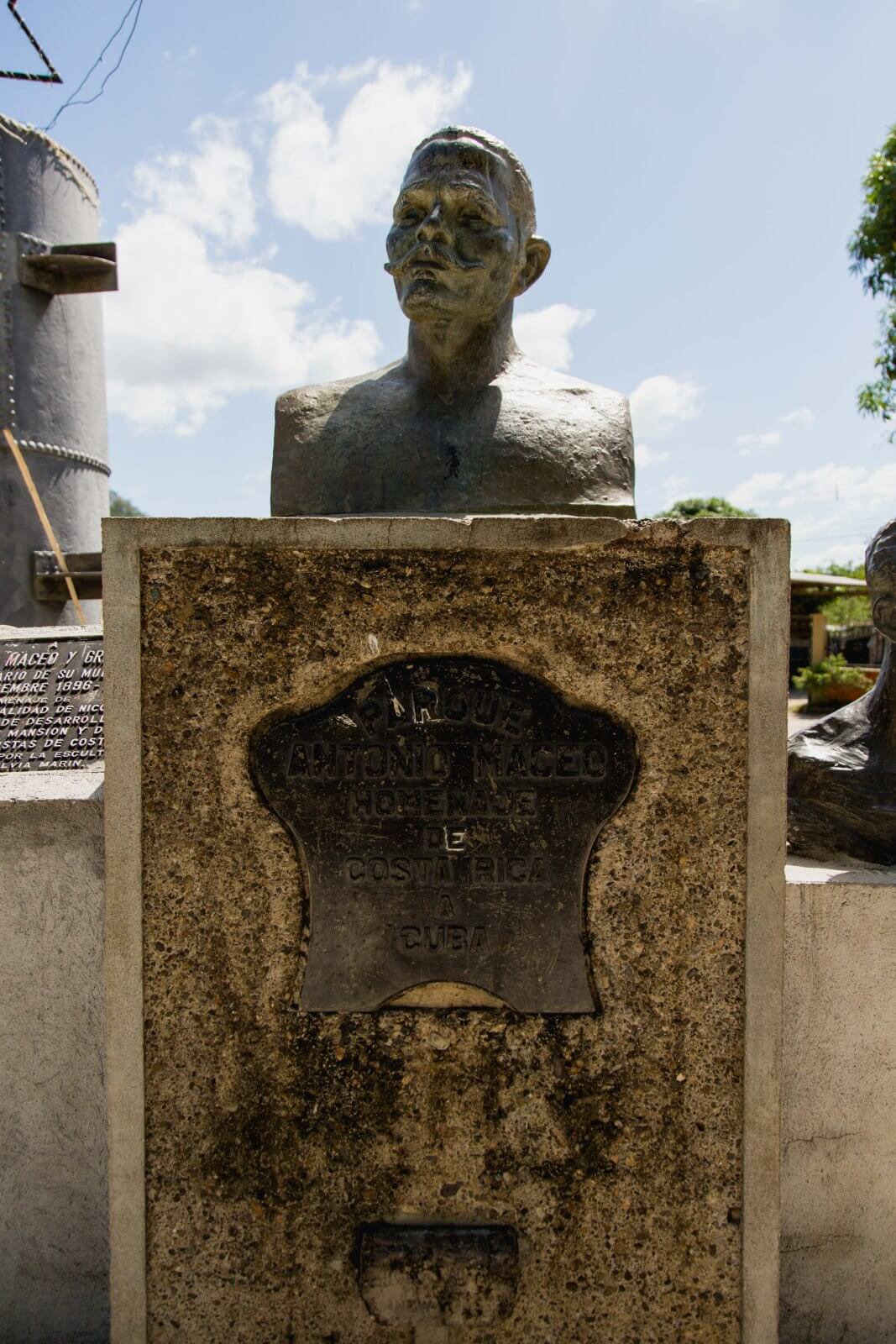
Name: Antonio Maceo and Grajales sculptural complex
Why is it important? The Cuban general Antonio Maceo, known as “The Bronze Titan,” was one of heros of Cuba’s independence and in 1891 he founded the Cuban colony which he called The Mansion of Maceo, as well as a sugar refinery in the community.
Year: 1996.
Sculptor: Thelvia Marín Mederos.
Cost: Unknown.
Material: Bronze and concrete.
How to get there: The statue is located in the Antonio Maceo park in the center of La La Mansión in Nicoya.
Waze directions: Waze
Santa Cruz

Name: Marimba Monument
Why is it important? The canton of Santa Cruz celebrates marimba players and the national Diria marimba as a symbol of tradition and happiness.
Year: 2003
Sculptor: Johnny García Clachar.
Cost: ¢20,000,000 ($35,700)
Material: Cement.
How to get there: The monument is located at the main entrance to Santa Cruz
Waze directions: Waze
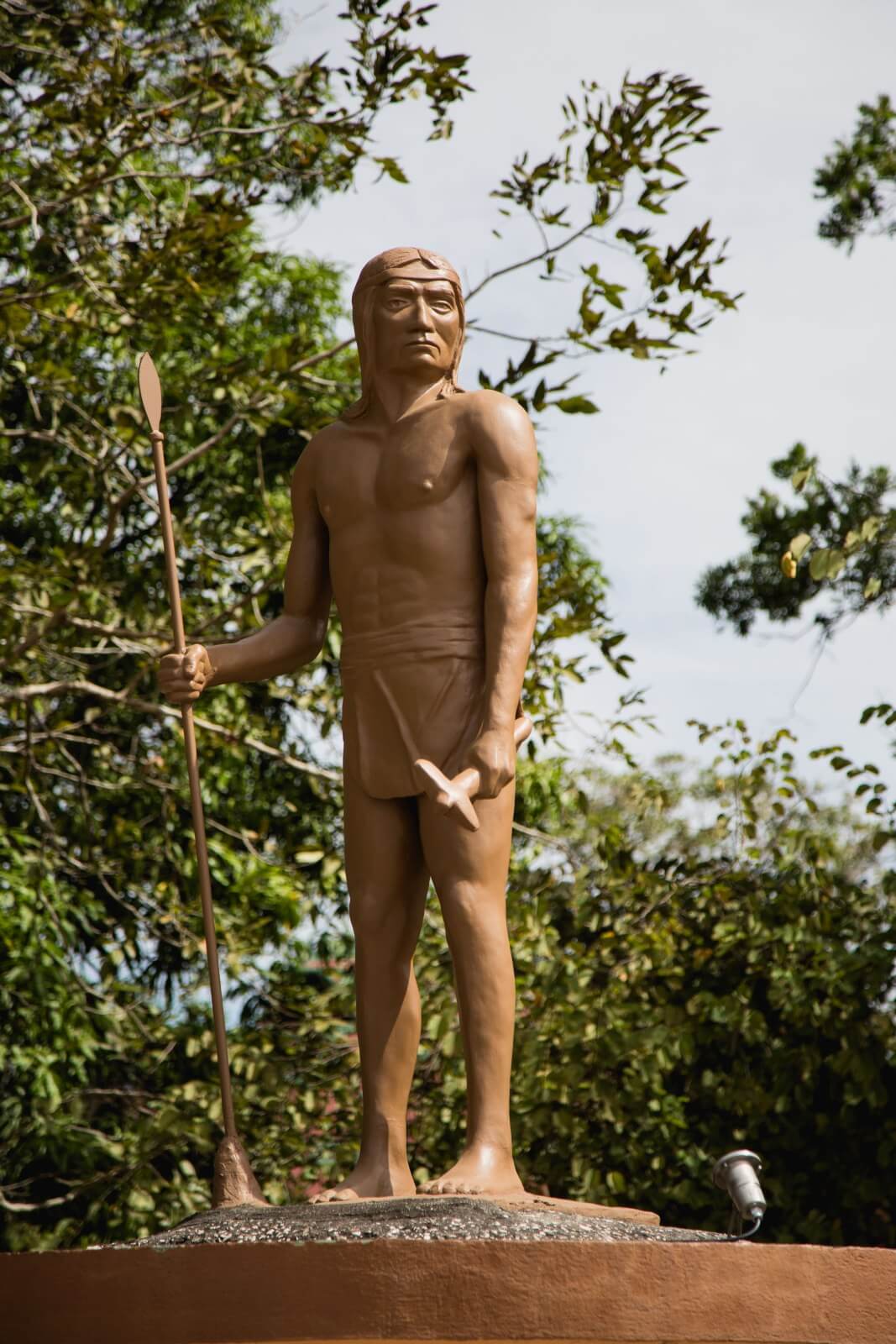
Name: Cacique Diriá Sculpture
Why is it important? This sculpture commemorates the chorotega indigenous, who laid the groundwork for the town of Santa Cruz and the province. The word Diriá, of Chorotega origins, means small hill and Santa Cruz was called “The Place of Diria” until 1782 because its where Cacique resided, who was the abuntil 1782 because he resided in Cacique, who was aboriginal the leader of the chorotegas.
Year: 2000
Sculptor: Johnny García Clachar
Cost: Unknown
Material: Concrete
How to get there: Parque Bernabela Ramos in Santa Cruz.
Waze directions: Waze
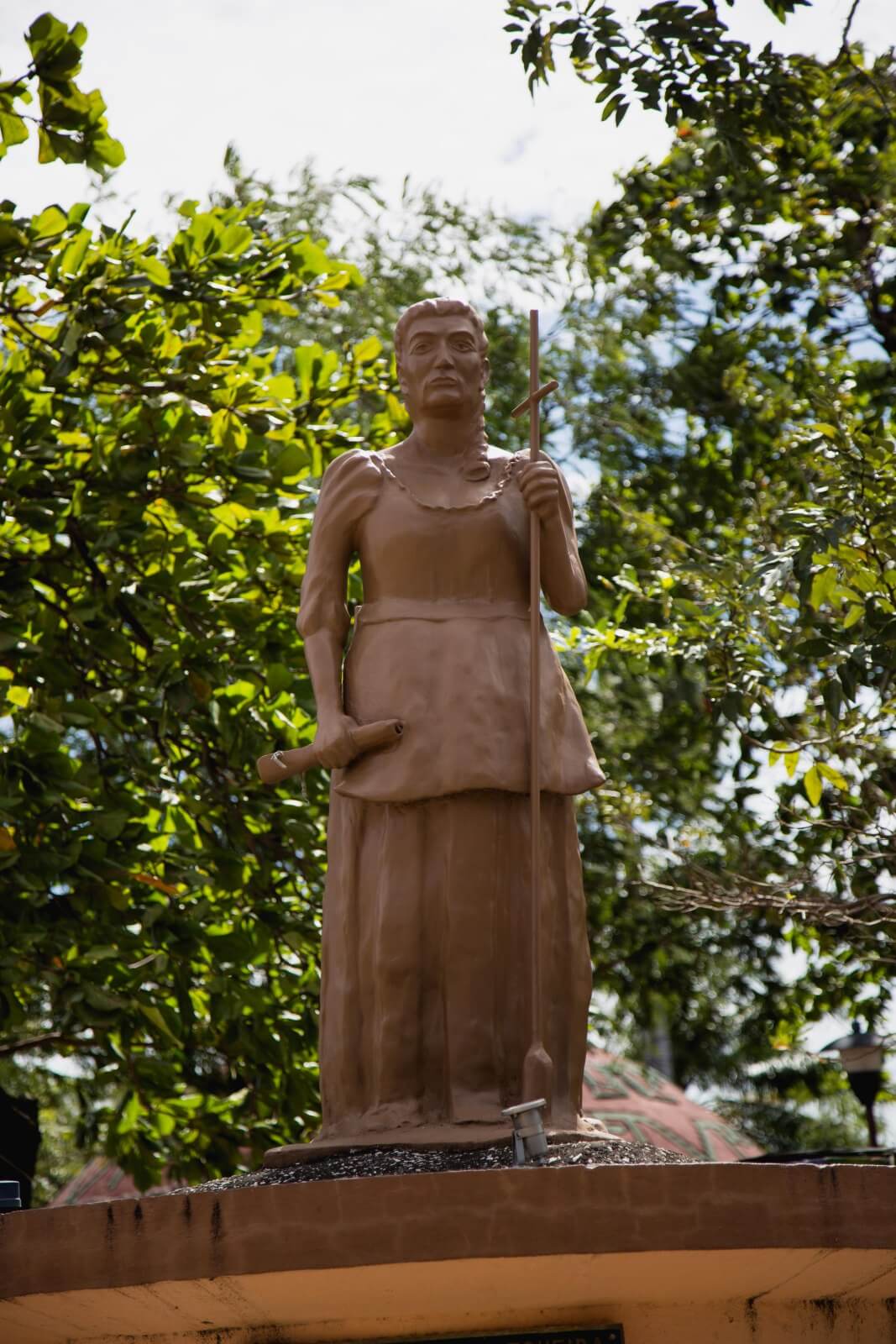
Name: Bernabela Ramos Sculpture
Why is it important? It pays tribute to Antonio Bernabela Ramos Sequeira, known as “the mother of Santa Cruz.” The current territory where the Santa Cruz canton sits used to be known as “The PLace of Diria.” Bernabela placed a wooden “Santa Cruz” on the patio of her house in 1782, which is what paved the way for changing the canton’s name. Daughter of Spaniards, Ramos donated a large part of the terrain where the current city of Santa Cruz is located.
Year: 2000
Sculpture: Johnny García Clachar
Cost: Unknown
Material: Concrete
How to get there: The sculpture is located in the Bernabela Ramos park in Santa Cruz
Waze directions: Waze
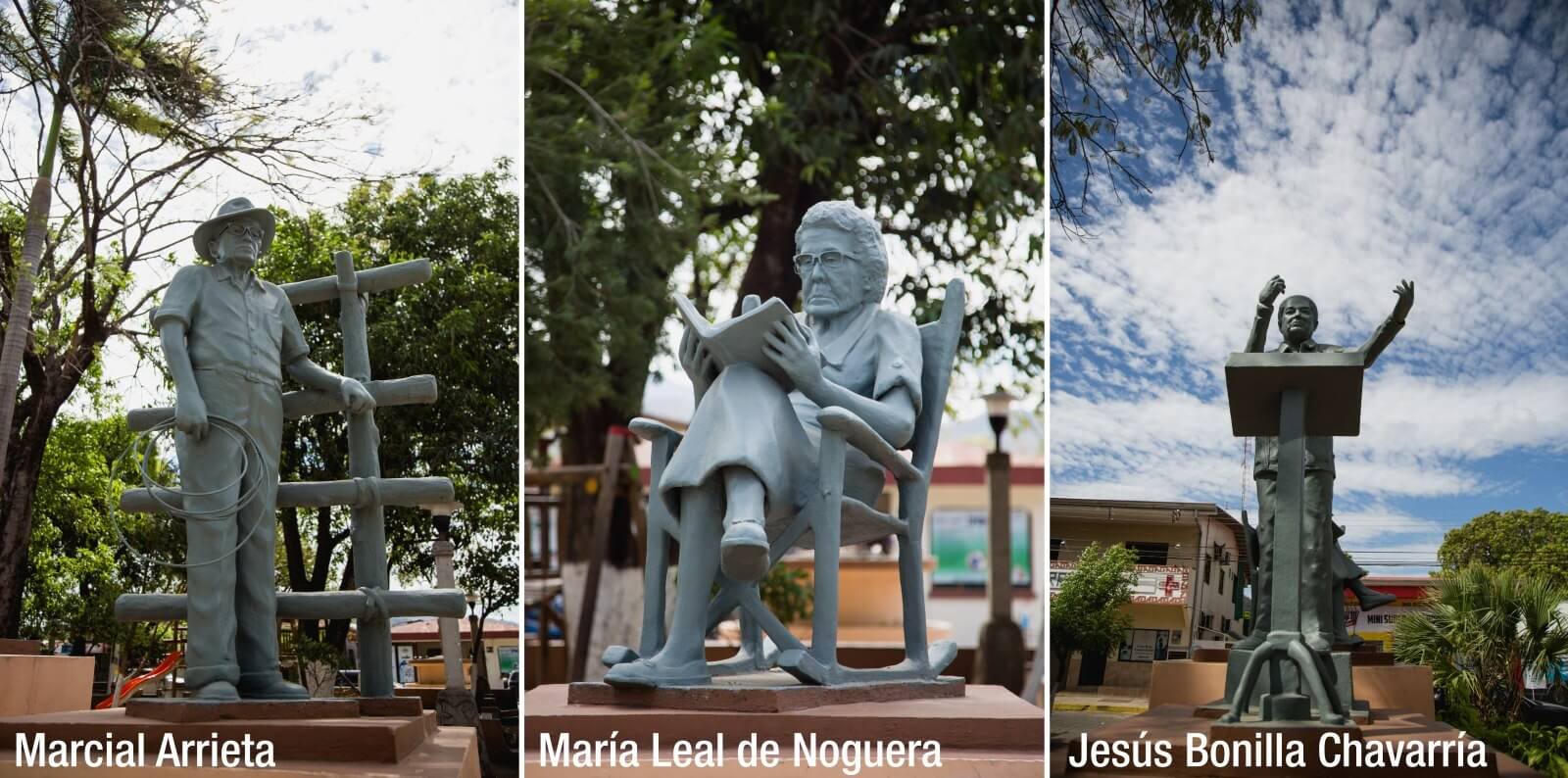
Name: Marcial Arrieta, Jesús Bonilla and María Leal Monument
Why is it important? It groups together three distinguished people of the canton. Marcial Arrieta was one of the largest ranchers in Santa Cruz and Guanacaste. Arrieta’s Miura bulls were the preferred breed in the National Typical Festivals.
María Leal de Noguera dedicated more than 30 years to teaching. In 1925 she established the first garden for children in Santa Cruz. She was recognized in the literary field for her children’s books, plays and articles about legends and Guanacaste customs. The Santa Cruz school carries her name in her honor.
Jesús Bonilla Chavarría, known as “The Maestro,” was one of Guanacaste and Costa Rica’s most important composers. He composed the famous bolero Luna Liberiana, was author of the song Pampa and of the music for Costa Rica’s Hymn of the Annexation of the Nicoya Peninsula. Jesús directed the first national symphonic orchestra in 1956. In 1999 he was awarded the National Popular Culture award and became part of the galery – with the same name – at the Ministry of Culture, Youth and Sports.
Year: 2016
Sculptor: Johnny García Clachar
Cost: Unknown
Material: Concrete
How to get there: The sculpture is located in the Bernabela Ramos park in Santa Cruz.
Waze directions: Waze


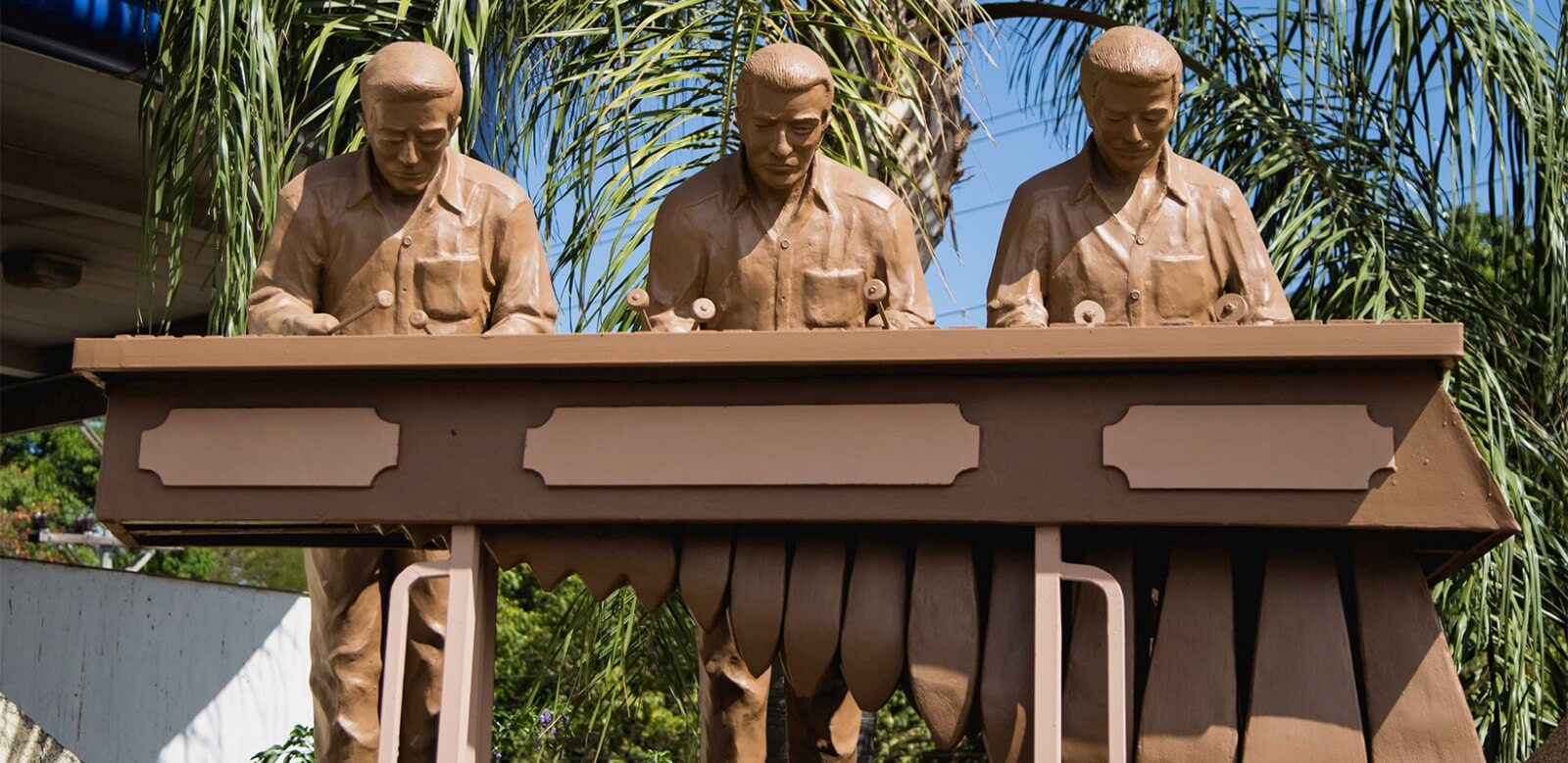


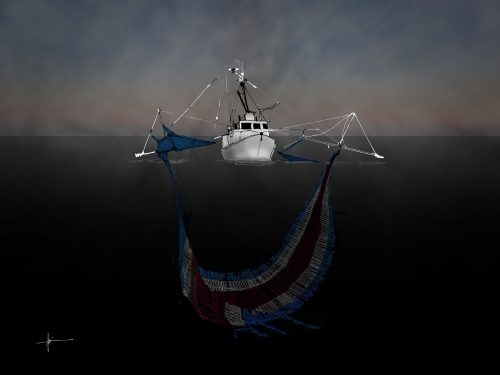

Comments